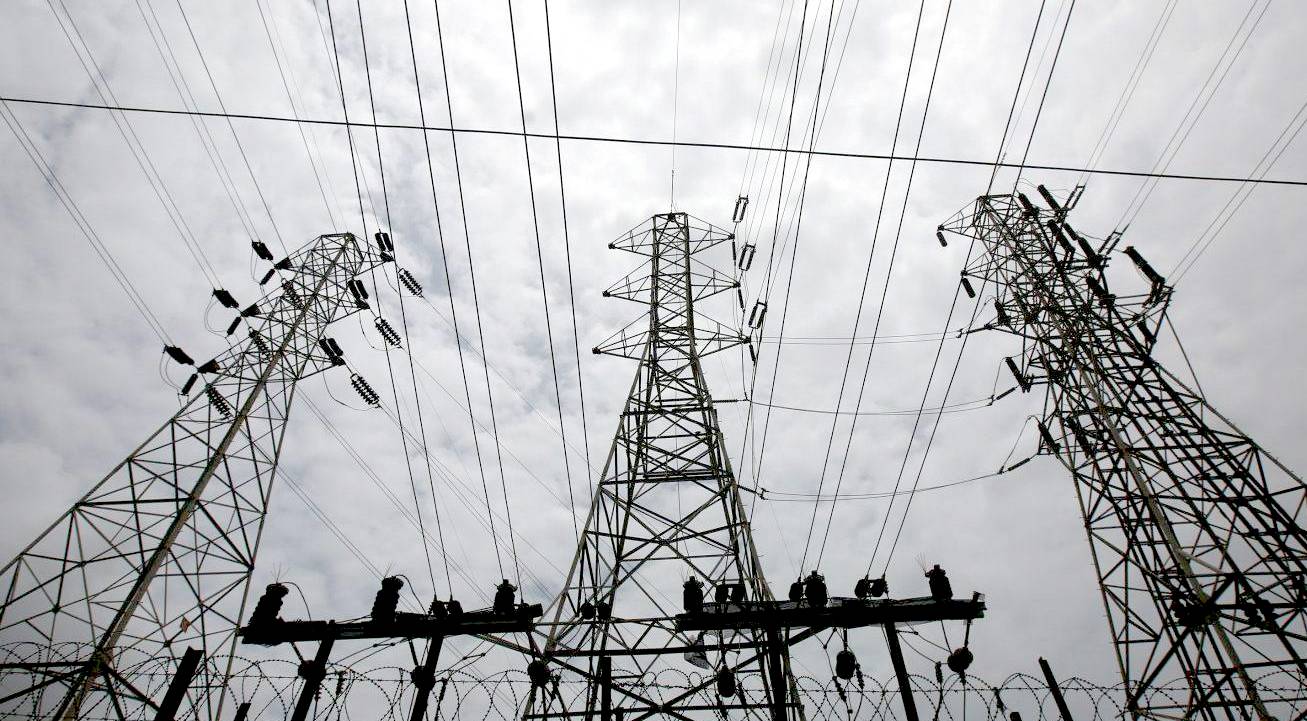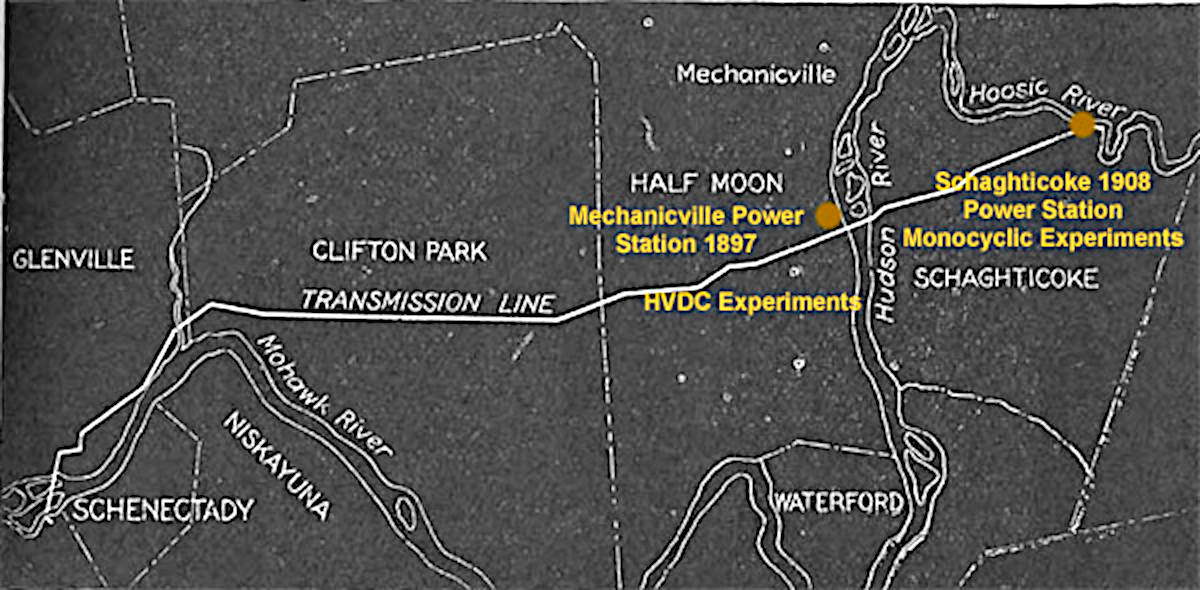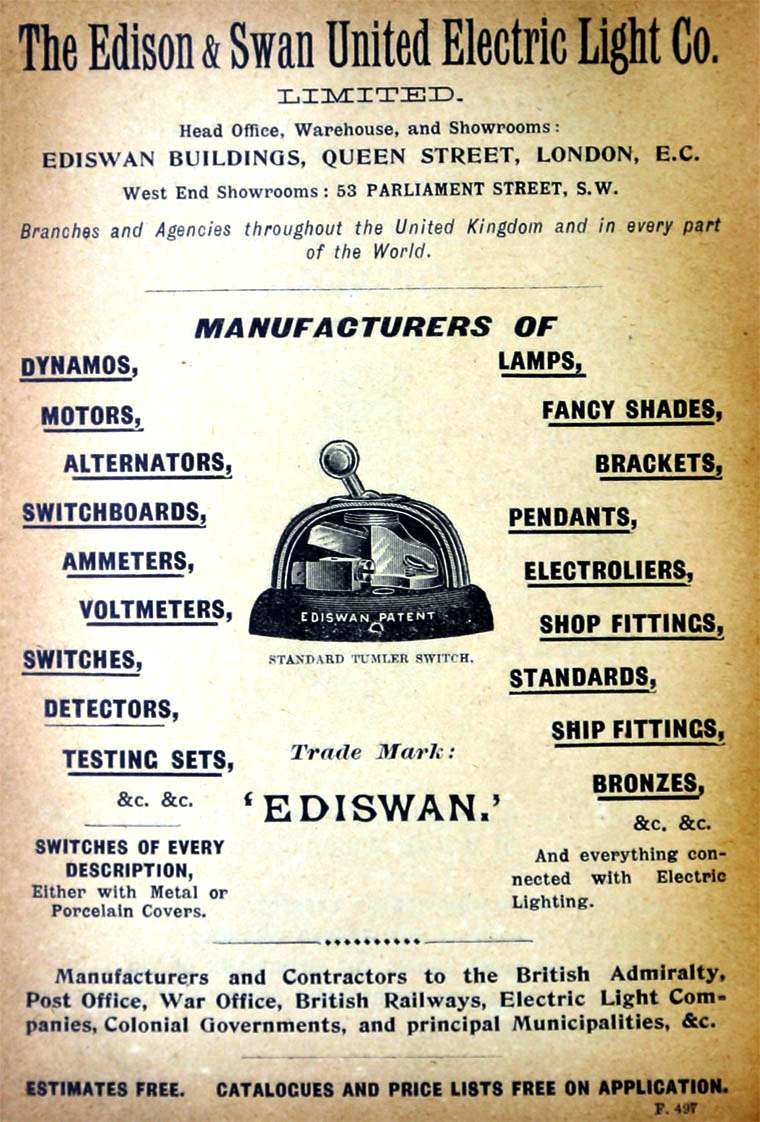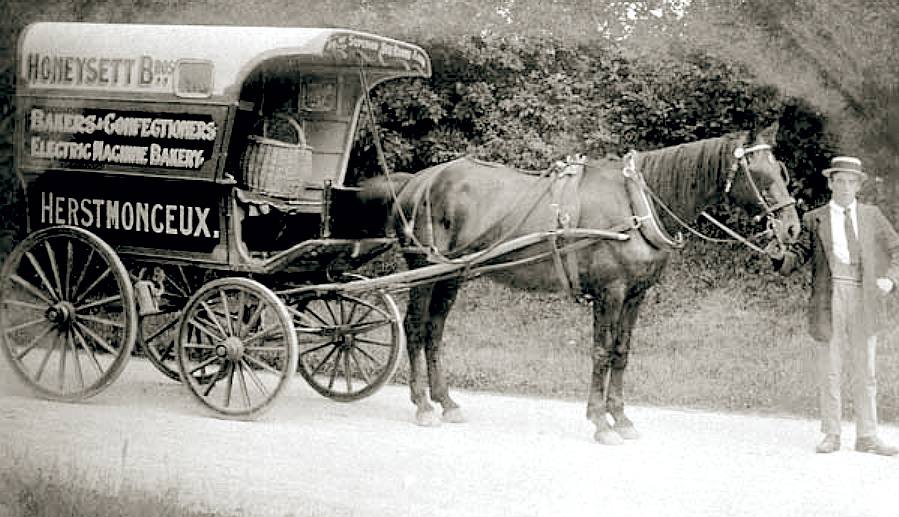|
MECHANICVILLE - 1897
Please use our A-Z to navigate this site where page links may lead to other sites, or see HOME
|
|
|
The electrical power generation industry began when light bulbs and other devices that needed reliable energy supplies were invented. Telephones and televisions all needed electricity.
Since power plants were very expensive to build, they were in places with economic interest. Mechanicville was important due to it's proximity to the General Electric plant in Schenectady and textile mills in Cohoes/Albany.
Hydropower had been used long before electricity, as water wheels and mills, thus the transition to electricity by attaching a generator to an output shaft, or by using belts, as in the Batemans setup, was a natural development for early innovators.
The attachment of DC generators to water wheels started in the 1870s. The main problem was that until the 3-phase AC generator invented by Nikola Tesla and others, there was no way to transmit power a long distance (to downtown areas in cities for example).
General Electric built the first 3-phase AC power plant in the Western Hemisphere in 1893 at Redlands, California. The same year another installation in Columbia Mills, South Carolina (The Pelzer Plant) provided the first full scale 3 phase electrification of a textile mill. Engineers Elihu Thomson and Steinmetz worked together to develop the world's first large 3 phase AC generators at Thomson-Houston and General Electric. Westinghouse independently pursued the 2 phase 25 Hz system which had it's roots in work by Siemens, Ferranti and others. In the end 3 phase proved to be the best system.
SCHENECTADY
The Schenectady economic industrial machine required enormous amounts of power,
the first place they looked for a suitable water supply was the Mohawk River. The Mohawk had large seasonal variations and was
thus insufficient water volume or reliability wise. The powerful Hudson
River, just 19 miles away to the east provided the solution. It is supplied year round by rain/snowfall
originating with the Adirondack Mountains. The map above from 1917 shows the Mechanic-Schenectady
transmission line with the extension to the Schaghticoke power station on the Hoosic River (This section was built later).
The course of the Schaghticoke-Schenectady transmission line through Mechanicville of the Schenectady Power Co.
This Transmission line carries practically the entire output of the Schaghticoke power house to Schenectady, N.Y., a distance of approximately 21 miles. The line consists of two separate three phase 40 cycle, 32,000 volt circuits, each of 6,000 kw. normal capacity.
These circuits start from the opposite ends of the power house, and, after crossing the Hossic River, are transferred by means of two terminal towers to a single line of transmission towers. The two circuits are carried on these on opposite ends of the cross arms, the three phases being superimposed. The power house ends of the line are held by six short quadrangular steel lattice work anchor poles with their bases firmly embedded in concrete, the cables being dead ended by General Electric disc strain insulators.
This equipment is together with the lightning arrestor horn gaps and the heavy line outlet insulators mounted on the roof of the powerhouse.While each circuit carries only 6,000 kW under normal conditions, either is capable of carrying the entire output of the station; in this case, however, the line losses are necessarily augmented. This feature prevents any interruption of the service from the failure of one of the circuits. There are altogether 197 transmission towers, comprising several distinct types. The Mechanicville hydroelectric building could be a UNESCO world heritage site in the industrial category, as there is no mention of public supply.
http://edisontechcenter.org/Mechanicville.html
SWITCHES & BULBS - Where would we be without electric lighting. A battle royal ensued in the law courts and Thomas Edison and Joseph Swan slogged it out in the London High Court, ending with the combatants working together as the Edison & Swan United Electric Light Co. ELECTRIC BAKERY - The earliest surviving generating station, dating from C. 1900, with battery based load levelling as the core technology, coupled to a 48 volt DC generator, is in the little village of Herstmonceux, Sussex.
Please use our A-Z INDEX to navigate this site
This website is provided on a free basis to promote zero emission transport from renewable energy in Europe and Internationally. Copyright © Universal Smart Batteries and Climate Change Trust 2022. Solar Studios, BN271RF, United Kingdom.
|



